#Alpha-hydroxyacids
Explore tagged Tumblr posts
Link
#Agingprevention#AHAs#Alpha-hydroxyacids#Antioxidants#bloodpressure#Cellturnover#Coldbeverage#digestion#Exfoliation#foodcoloring#freeradicals#HairCare#Hairfall#Hotbeverage#immunesystem#Luster.#Minerals#Naturalremedy#OrganicDriedHibiscus#recipes#Refreshment#Shine#SkinCare#Tangy#Tart#vitaminC
0 notes
Text
How to Choose Best Skin Care Products
So many skin care products yet no idea what specific product will do the needed job. We all have gone through such situations at some stage of our life. Occasionally your skin changes its behaviour when it move from the 20s to 30s, and 30's to 40s.A Skincare product has no value if it does not do the job it is supposed to do. The quality, effectiveness, worth, and actions are only authentic if they claim to do the action of improving and enhancing the skin. Most people tend to think skin care products are the solution to all their skin problems or rather skin products are the magical quick fix to a horde of skin issues. This kind of thinking is not practical. In order to recognize which skin care product is the best suited for you, it is important to know what it will be doing to the skin and the kind of solution it will be giving. Without this knowledge, skin care products is a bit of a riddle for most people. Let us look at the factors to look out for when we choose skincare products,

1. Which ingredients to use and avoid
The ingredients in a skin product is the first step to consider when selecting a skin care product. The chemistry of cosmetic products is what makes or breaks your skin. For that reason, we need to know what to use and to avoid:
a. Need Natural Antioxidants and Vitamins: Anti-oxidants are natural elements that help in reducing the environmental damage happening to the skin because of exposure to sun, pollution and free radicals. Free radicals can harm the skin just like environmental factors and our body produces them to a certain extent. Antioxidants calms the skin and reduces the stress of the skin's reaction to such negative factors. Some examples of antioxidants are flavonoids (something found in tea, both black and green), resveratrol (a compound that’s found in skin of grapes, peanuts), and vitamins like vitamin E, Vitamin C and Vitamin A
b. Avoid Parabens : These are preservatives used to make a skin care product last longer. Some cosmetic companies claim that these facts about parabens are merely common thinking about it becoming bad for the body. That is a marketing technique. The truth is parabens can go through the skin and interfere with hormones like estrogen. According to studies, it can increase division of cells and tumour growth. Hence, it has been associated with reproductive problems and cancer. Some common parabens to look out for are Propylparaben, Butylparaben and Methylparaben .
c. Look for AHAs-AHA is an acronym for alpha hydroxyacid. It is a group of naturally found fruit acids, linked to providing relief for hyperpigmentation, and used in moisturizers to straighten fine lines. Some naturally occurring AHAs are acids found in sugarcane, tomatoes, apples, grapes and lemon. They also hydrate and make the skin function normally.....Read more
1 note
·
View note
Text
C'est la différence entre AHA et BHA - Beauty Report
C’est la différence entre AHA et BHA – Beauty Report
l’essentiel en bref Les AHA et BHA sont des hydroxyacides qui ont un effet exfoliant. L’AHA a un effet exfoliant et éclaircissant plus fort et soutient l’anti-vieillissement. Le BHA aide également à la production d’huile et atténue les imperfections et les points noirs. Que sont exactement les AHA et BHA ? L’AHA (Alpha Hydroxy Acid) et le BHA (Beta Hydroxy Acid) font partie des Hydroxysäurenqui…
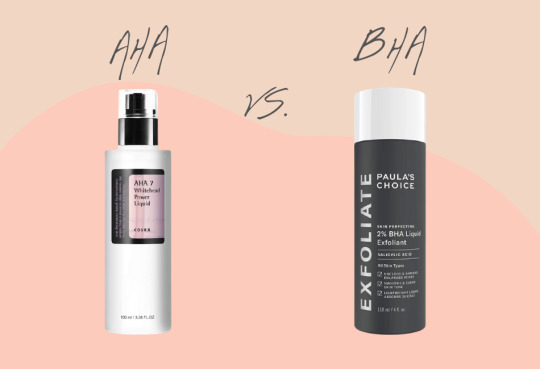
View On WordPress
0 notes
Photo
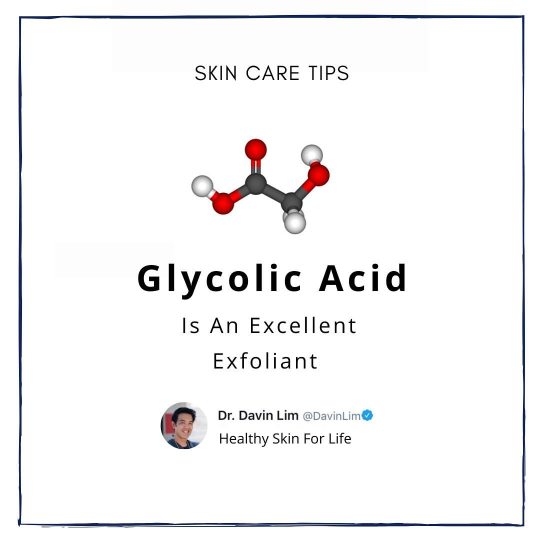
G is for Glycolic Acid. This alpha hydroxy acid can be used as a cream, peel, wash or lotion 💆🏼♀️ - ⚡️ Mode of action: Chemical #Exfoliant. Glycolic acid can remove the top layer of skin improving skin texture, dullness and luminosity. AHAs can also stimulate collagen, hence glycolic acid can improve fine #wrinkles and other signs of skin ageing. - 👨🏻⚕️Clinical application: Glycolic acid can treat a myriad of dermatological conditions including skin ageing, #melasma, #sunspots, post-inflammatory pigmentation, #blackheads & #acne. - 🌚 Best applied: In the evening as part of your #skincare routine. For patients with non-sensitive skin, Glycolic acid can be used as a primer to enhance penetration of skin care actives. See caution below for patients with #sensitiveskin. - ✔️ Best used with: Skin care actives as part of your #skincareroutine. For advanced users #AHA can intensify other formulations such as #retinol. Glycolic acid should be gradually added over time. Start 2-3 nights a week, titrated accordingly. Glycolic acid can promote #collagenbuilding especially in unbuffered low pH #chemicalpeels - ⚠️ Caution: Considering upto 60% of the population has sensitive skin, apply with utmost caution. Patients with #rosacea, dermatitis or inflammatory- #acne may not tolerate glycolic acid formulations. - 💡Davin’s Protip: Glycolic acid can be used as a stand alone or as a skin primer. The later involves improving skin permeability to other actives. Regular application of glycolic acid can enhance biological activity of retinoids. For example. daily AHA use for 7- 10 days can intensify retinoid peels. Dermatologists often prescribe #hydroxyacids to treat #sunspots as well as #psoriasis. In my practice, I often add glycolic acid as a peel or lotion when patients can tolerate the ABCs of skin actives. Used sensibly, AHAs such as glycolic acid can be an excellent addition to your skin care range. Clinical peels up to 70% can markedly reduce sun damage & even treat wrinkles - 😎Dr Davin Lim, @drdavinlim @cliniccutis Brisbane AU🇦🇺 . #dermatologist#skincareguru #skincarescience #skincarecommunity Illustrative credit Wander Beauty (at Brisbane, Queensland, Australia) https://www.instagram.com/p/CGQlsZ_jiai/?igshid=pk8e6uykh6yj
#exfoliant#wrinkles#melasma#sunspots#blackheads#acne#skincare#sensitiveskin#skincareroutine#aha#retinol#collagenbuilding#chemicalpeels#rosacea#hydroxyacids#psoriasis#dermatologist#skincareguru#skincarescience#skincarecommunity
0 notes
Photo

#@%^& Innate Skin Clear Skin AHA/BHA Exfoliating Cleanser Alpha & Beta HydroxyAcid 8oz https://ift.tt/3cwp7nP
0 notes
Photo
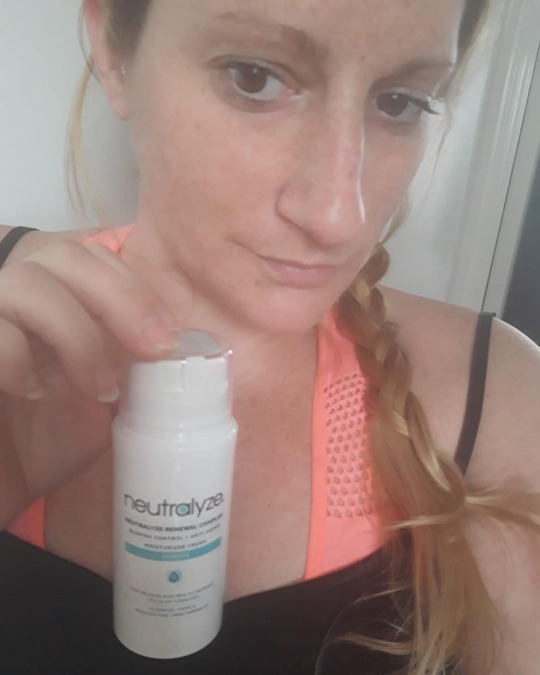
#ad 🙋🏼OK beauties... let's all keep it really real right now. How many of us still battle the occasional (or if you're like me- the more than occasional) breakout here and there? I was recently introduced to @neutralyzeskincare Neutralyze Renewal complex (Hydrate), and it could NOT have come at a more perfect time. Literally. This moisturizing cream is acne control AND anti-aging in one!!! I swear to you all, someone somewhere heard my prayers. I have been wishing and hoping for THIS very type of product for SO long!!! I suffer from hormonal acne, (yes still at 38🙈) and absolutely need to be able to treat it, but I am almost 40 and I've been wanting to use anti-aging products but a lot of them used to cause break outs. 💙 @neutralyzeskincare Renewal Complex contains time-released aha & bha (alpha & beta hydroxyacid), both used to increase cellular turnover. 💙 It also contains salicylic acid and mandelic acid (salicylic acid is a very common ingredient in most acne products) On the front of the bottle it says that the moisturizing cream will hydrate, firm and reduce lines/wrinkles. I haven't been using it long enough to speak to that, however, I will say that I had just broken out badly when I started using this and within 2 days what was a huge boulder (in my eyes!) shrunk dramatically to a small, barely noticeable bump. And of course I am kicking myself for not taking that very first picture when it was at it's biggest, but those pictures are two days later and you can still see one of the pimples. (I don't filter my pictures. What you see is what you get.) I am going to definitely continue to use neutralyze renewal complex (up to three times a day) and hopefully add to the system. Stick with me and you can watch my progress!! I can't thank @stackinfluence @neutralyzeskincare enough and especially, Mady, for letting me try this. *pr/gifted*.🙋🏼 • • #neutralyze #skincare #prgifted #acnetreatment #acneskincare #antiagingskincare #antiaging #skincaredaily #skinstagram #skincareblogger #butfirstskincare #skincareisselfcare #beautylife #beautyclub #beautyinfluencer #honestreview #microinfluencer #beautyobsessed #discoverunder10k #beautybloggerlife (at Newark, New Jersey) https://www.instagram.com/p/B7W60T6pmtU/?igshid=n4sy9w1tgcjk
#ad#neutralyze#skincare#prgifted#acnetreatment#acneskincare#antiagingskincare#antiaging#skincaredaily#skinstagram#skincareblogger#butfirstskincare#skincareisselfcare#beautylife#beautyclub#beautyinfluencer#honestreview#microinfluencer#beautyobsessed#discoverunder10k#beautybloggerlife
0 notes
Video
(via https://www.youtube.com/watch?v=0DRg793K224)
อีกหนึ่งทางเลือกในการพิชิตมะเร็งที่มีประสิทธิภาพคือการใช้กลไกธรรมชาติในการรักษา โดย ศ.ดร.พิเชษฐ์ อธิบายว่า “Immunotherapy” หรือการรักษาโรคด้วยภูมิคุ้มกันบำบัด คือ การเข้าไปเสริมสร้างประสิทธิภาพการทำงานของเม็ดเลือดขาวเพชฌฆาตที่มีความสามารถในการกำจัดเฉพาะเซลล์มะเร็งที่มีลักษณะของผิวเซลล์ต่างจากเซลล์ปกติของร่างกาย โดยเม็ดเลือดขาวเพชฌฆาตจะไม่ทำลายหรือกระทบต่อเซลล์ปกติของร่างกาย จึงมีความปลอดภัยและไม่มีผลข้างเคียง
ศ.ดร.พิเชษฐ์กล่าวเพิ่มเติมว่า การกระตุ้นเสริมสร้างประสิทธิภาพของเม็ดเลือดขาวเพชฌฆาตทำได้โดยการนำสารที่มีสรรพคุณสูงสุดในมังคุด คือ GM-1 มาเสริมฤทธิ์ด้วยสารสกัดจากพืชและผลไม้อีก 4 ชนิด คือ ถั่วเหลือง งาดำ ฝรั่ง และบัวบก แล้วได้สารผสมที่ไปกระตุ้นเม็ดเลือดขาวชนิด Th1, Th9, Th17 และ Interleukin-18 (โดยพิสูจน์ด้วยการทดสอบจากศูนย์วิจัยเทคโนโลยีชีวการแพทย์ มหาวิทยาลัยเชียงใหม่) ซึ่งไปร่วมกันเสริมสร้างประสิทธิภาพเพชฌฆาตในการฆ่าเซลล์มะเร็งของเม็ดเลือดขาวให้เพิ่มมากขึ้นได้หลายเท่าตัว
งานวิจัย APCO ชนิดน้ำ - มีสาร GM-1 ที่ทำลายผนังเซล��ะเร็ง - มีสาร Alpha Hydroxyacids ที่ดักจับธาตุเหล็กอิสระที่เซลมะเร็งใช้เป็นตัวเร่งในการขยายตัว - มีสาร HCA ที่ดักจับเอนไซม์ที่เซลมะเร็งใช้ในการสังเคราะห์ไขมัน ซึ่งเป็นองค์ประกอบของเยื่อบุผนังเซล - มี Polysaccharides ที่แยกการแพร่ขยายของเซลมะเร็ง
งานวิจัย APCO ชนิดแคปซูล - เพิ่ม Th1 ได้ 2 เท่า - เพิ่ม Th17 ได้ 5 เท่า - เพิ่ม Th9 ได้ 2 เท่า แล้วไปกระตุ้นให้เม็ดเลือดขาวเพชฌฆาตทำงานได้ดีขึ้น ร่างกายจึงสามารถจัดการกับเซลมะเร็งได้ วิธีรับประทาน มะเร็งทุกชนิด #ชนิดแคปซูล# ก่อนอาหารเช้า-กลางวัน-เย็น 1 ชั่วโมง ครั้งละ 3 แคปซูล #ชนิดน้ำ# หลังอาหารเย็น 2 ชั่วโมง ครั้งละ 200 ml. หลักการรับประทาน APCO cap ให้เกิดประสิทธิภาพสูงสุด
**รับประทานตอนท้องว่าง (ก่อนอาหาร 1 ชม.) เพื่อการดูดซึมเข้าสู่เซลล์ได้หมด **ห้ามรับประทานอาหารเสริม หรือสมุนไพรอื่น ร่วม เพราะจะทำให้สูตรของสารอาหาร APCO cap เจือจางส่งผลให้ขาดประสิทธิภาพในการปรับสมดุลโรคมะเร็ง **สามารถทานร่วมยาปฎิชีวนะอื่นได้ เพราะยาคือสารสังเคราะห์ทำงานนอกเซลล์ APCO cap เป็นสารสกัดจากพืช 5 ชนิด ทำงานในเซลล์ จึงไม่ขัดประสิทธิภาพกัน
สอบถามเพิ่มเติมหรือสั่งซื้อผลิตภัณฑ์ 080-1576545
line id 0910152989
https://line.me/R/ti/p/%40xzj8410z www.facebook.com/cancer.wellnes
1 note
·
View note
Text
DIY about facial aging and wrinkles
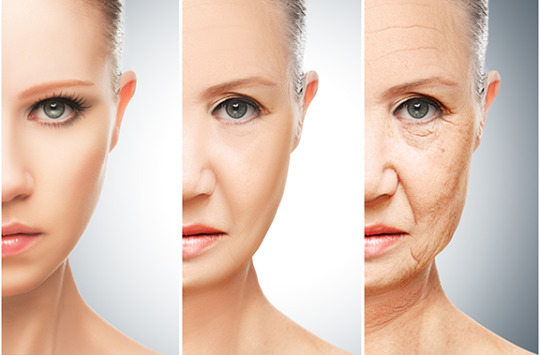
Start a skin rejuvenation routine of Vitamin C (Vitamin C Serum, Obagi Effective or LaRoche Posay C), tretinoin, and alpha hydroxyacid to reverse a number of the changes of getting older and to gradual down the growing older process. Some physicians use facial lifting surgery, Fotofacial, dermabrasion, TCA peels, laser resurfacing, microdermabrasion, fat or collagen injections to smooth out wrinkles. Facial lifting, dermabrasions, and laser resurfacing are surgical procedures. They are more expensive and require at least one week for recovery. However, these generally produce the best deal of improvement! More records on each of these procedures may be discovered on our site.
0 notes
Link
Before life began on Earth, the environment likely contained a massive number of chemicals that reacted with each other more or less randomly, and it is unclear how things as complex as cells could have emerged from such chemical chaos.
Now, a team led by Tony Z. Jia of the Earth-Life Science Institute (ELSI) at the Tokyo Institute of Technology and Kuhan Chandru of the National University of Malaysia, has shown that simple α-hydroxy acids, like glycolic and lactic acid (which is used in common store-bought facial peels), spontaneously polymerize and self-assemble into polyester microdroplets when dried at moderate temperatures followed by rehydration, as might have happened along primitive beaches and river banks or in drying puddles.
These form a new type of cell-like compartment which can trap and concentrate biomolecules like nucleic acids and proteins. These droplets, unlike most modern cells, are able to easily merge and reform and thus could have hosted versatile early genetic and metabolic systems potentially critical for the origins of life.
Figure 1. A team of scientists from the Earth-Life Science Institute have discovered that simple organic compounds like glycolic and lactic acid polymerize and self-assemble into cell-sized droplets when dried and rewetted, as might have happened along primitive beaches and drying puddles. Credit: Nerissa Escanlar, ELSI
Scientists from around the world are actively working to understand how life began. All modern Earth life, from bacteria to humans, is made up of cells. Cells are comprised of lipids, proteins, and nucleic acids, with the lipid forming the cell membrane, an enclosure that keeps the other components together and interfaces with the environment, exchanging food and waste. How molecular assemblages as complex as cells originally formed remains a mystery.
Most origins of life research focuses on how the molecules and structures present in contemporary life were produced by the environment, and then assembled into structures that led to the first cells. However, there were likely many other types of molecules that formed alongside biomolecules on early Earth, and it is possible that life started using very simple chemistry unrelated to modern biomolecules then evolved through increasingly complex stages to give rise to the structures found in modern cells.
Previous work conducted at ELSI showed that moderate temperature drying of the simple organic compounds known as alpha-hydroxyacids, which are found in meteorites and many simulations of prebiological chemistry, spontaneously polymerizes them into mixtures of long polyesters. Building on this work, Jia and colleagues took the next step and examined these reactions under the microscope, and found that these mixed polyester systems form a gel phase and spontaneously self-assemble when rewetted to form simple cell-like structures.
The most challenging aspect of this work was devising new methods to characterize the droplets’ properties and functions, as no one had analyzed such systems before. Jia noted that the team was fortunate to have such a diversity of multidisciplinary expertise including chemists, biochemists, materials scientists, and geologists. After determining their composition and showing their propensity to self-assemble, the next question was whether these cell-like structures might be able to do something chemically useful.
Modern cell membranes perform many crucial functions that help maintain the cell; for example, retaining macromolecules and metabolites in one place, as well as providing a constant internal environment, which can be very different from the one outside the cell. They first measured how stable these structures were and found they could persist for very long periods depending on the environmental conditions, but could also be made to merge and coalesce.
They then tested the ability of these structures to sequester molecules from the environment and found they accumulated large dye molecules to a remarkable degree. They then showed that these droplets could also host RNA and protein molecules and still permit them to be functionally catalytic. Further, the team showed that the droplets could assist in the formation of a lipid layer on their surface, suggesting they could have helped scaffold protocell formation.
Jia and colleagues are not certain these structures are the direct ancestors of cells, but they think it is possible such droplets could have enabled the assembly of protocells on Earth. The new compartmentalization system they have found is extremely simple, they note, and could form easily in primitive environments throughout the Universe.
Says Jia, “This allows us to imagine non-biological systems on early Earth that could have still had a hand in the origins of life on Earth. This suggests there may be many other non-biological systems that should be targets of future investigations of this type.” He thinks the development of these or similar model systems could allow better study of the evolution of diverse chemical systems representative of the complex chemistries likely to be found on primitive planetary bodies.
“The early Earth was certainly a messy place chemically,” Jia explains, “and often most origins of life studies focus on modern biomolecules under relatively “clean” conditions. Perhaps it is important to take these “messy” mixtures and see if there are interesting functions or structures that can arise from them spontaneously.” The authors now think that by systematically increasing the chemical complexity of such systems, they will be able to observe how they evolve over time and possibly discover divergent and emergent properties.
“We have this new experimental system we can now play with, so we can start to study phenomena like evolution and evolvability of these droplets. The possible combinations of structures or functions these droplets might have are almost endless. If the physical rules that govern the formation of droplets are fairly universal in nature, then we hope to study similar systems to discover whether they also can form microdroplets with novel properties,” adds Jia.
Finally, while the team is presently focused on understanding the origins of life they note this basic research could have applications in other areas, for example, drug delivery and personalized medicine. “This is just a wonderful example of the unexpected ways projects can develop when a team of diverse scientists from around the world come together to try and understand new and interesting phenomena,” said team member Jim Cleaves, also of ELSI.
Figure 2. Prebiotically synthesized heterogeneous polyester microdroplets containing a fluorescent dye, showing the capability of polyester microdroplets to act as primitive compartments. (Credit: Tony Jia, ELSI)
Figure 3. Alpha-hydroxy acid monomers are dried, resulting in the synthesis of a polyester gel. This gel is then rehydrated, resulting in the assembly of microdroplets. (Credit: ELSI)
Journal Reference: PNAS
Materials provided by the Tokyo Institute of Technology
The post Scientists Discover New Chemistry That May Help Explain the Origins of Cellular Life appeared first on ScienceHook.
via Science Blogs
0 notes
Text
#The #Beauty #of #AHA’s #eye #flight #flowers #insta #lifestyle #pled #radiojockey #starlook #trends #view
AHA’s – or alpha hydroxyacids – are generally discovered in pores and skin care items. AHA is a team of acids frequently called “fruit acids.” Whilst there are several kinds, they all are generally consumptiond to take care of hyperpigmentation, broken skin and zits.
The beauty of AHAs is that they boost your skin with small hard work required on your component! They exfoliate lifeless skin which in switch will help to unclog pores, preserve skin easy and clear, and lower wonderful strains and wrinkles. Additional, you will find the additional reward that in undertaking so – they really help to improve skin’s hydration. They’ve organic moisturizing houses and activate your skin’s own hyaluronic acid. Hyaluronic acid then is in a position to keep a lot more humidity in your skin. Here’s why you are going to locate AHA’s in encounter lotions (exactly where they can do their work right away or in the course of the working day) and in masks and face remedies.
Some typical AHA’s contain:
Glycolic Acid that’s bitterced from sugar cane juicewhich is sourced from sour milk
Lactic Acid
Malic Acid which is found in apples
Tartaric Acid which arrives from grapes and winewhich comes from lemons, limes, pineapples, oranges and other end result
Citric Acid
Pyruvic Acid is derived from tartaric acid
Glycolic and Lactic acids are concept to be the most successful for use in skincare and can be safely and securely employed in beauty products at a rate of no increased than ten%. Normally, AHA’s can be safe for all skin types, however folks with fragile skin need to examination the products on their skin ahead of they use them. And as with any significant exfoliation, excess care to keep away from sunshine publicity should be taken. Liberal and continual use of sunscreen is recommended.
So go ahead – embrace individuals AHAs. Your skin will be happy you did!
The post The Beauty of AHA’s appeared first on Beautiful Women.
source http://topbeautifulwomen.com/the-beauty-of-ahas/
0 notes
Photo
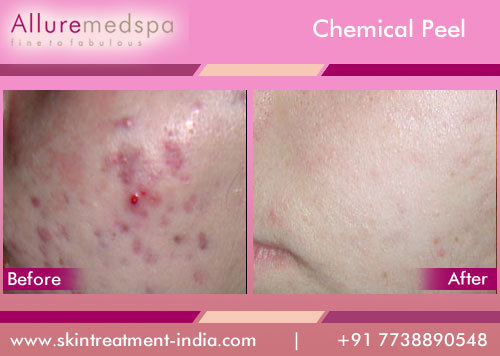
Chemical peels can be broadly categorized into alpha-hydroxyacids (AHA), beta-hydroyacids (BHA), salicylic acid, tricholoracetic acid (TCA) and phenol.
0 notes
Text
Information About Melasma
Facts About Melasma
Melasma or chloasma is a discoloration of the facial pores and skin, typically affecting women throughout pregnancy. Melasma is a darkish pores and skin discoloration discovered on sun-exposed areas of the face. Chloasma is a synonymous...
Melasma or chloasma is a discoloration of the facial pores and skin, usually affecting women during pregnancy. Melasma is a dark pores and skin discoloration discovered on solar-exposed areas of the face. Chloasma is a synonymous time period generally used to describe the occurrence of melasma during pregnancy. Chloasma usually affects ladies but sometimes is seen in younger men who use after-shave lotions, scented soaps, and other toiletries. Chloasma is particularly widespread in women aged 20-40. It affects the forehead, cheeks and upper lips. It happens ceaselessly throughout pregnancy and is extra widespread in darkish skins than in fair skins. Chloasma often affects girls but sometimes is seen in younger men who use after-shave lotions, scented soaps, and different toiletries. Melasma is rather more widespread in girls than in men. dark lips and smoking Women are affected in 90% of circumstances. When men are affected, the clinical and histologic picture is equivalent. Melasma is uncommon earlier than puberty and most commonly happens in women during their reproductive years. Melasma is usually related to the female hormones estrogen and progesterone.
Melasma is a darkening of the facial pores and skin, generally affecting the apples of the cheeks, the mid forehead, jawline and areas across the mouth. Melasma doesn't trigger some other symptoms in addition to skin discoloration however could also be of great beauty concern. Sun publicity is also a strong danger factor for melasma. It is particularly widespread in tropical climates. Melasma seems on the skins floor as darkish or irregular patches. Melasma isn't related to any inside diseases or organ malfunction. Genetic predisposition can also be a significant think about figuring out whether or not someone will develop melasma. Bleaching creams comprise hydroquinone, which inhibits formation of latest pigment. Bleaching creams take 3 to six months to acquire a worthwhile lightening of pigmentation. Allergic reactions to medicine or cosmetics, and in some instances stress, can produce the situation.
Repeated superficial chemical peels (glycolic acid or Jessner answer) could also be useful. Creams containing tretinoin, kojic acid, and azelaic acid have been proven to enhance the appearance of melasma. Laser resurfacing is generally worthwhile but should be performed cautiously as it might aggravate pigmentation. Avoiding the sun and utilizing sunscreen are key to stopping melasma. Chemical peels, microdermabrasion, and even some lasers could be effective treatments. Exposure to the ultraviolet light (sunlight and tanning booths) should be minimized. Sunscreens or sunblocks must be used. Azelaic acid (20%), thought to decrease the activity of melanocytes. Facial peel with alpha hydroxyacids or chemical peels with glycolic acid. Cosmetic cover-ups can also be used to scale back the looks of melasma. Profitable treatment usually begins with the trio of sunblocks, bleaching creams and time. Minimizing solar exposure can prevent darkening of present darkish patches, in addition to the looks of recent areas.
Melasma Remedy Ideas
1. Topical depigmenting brokers, corresponding to hydroquinone (HQ) both in over-the-counter (2%) or prescription (four%) strength.
2. Tretinoin, an acid that will increase pores and skin cell (keratinocyte) turnover.
Three. Azelaic acid (20%), thought to decrease the activity of melanocytes.
4. Facial peel with alpha hydroxyacids or chemical peels with glycolic acid.
5. Laser resurfacing is typically worthwhile however should be performed cautiously as it could actually aggravate pigmentation.
6. Cosmetic cover-ups can also be used to scale back the looks of melasma.
7. Azelaic acid inhibits formation of pigment and can also be effective towards acne.
Eight. Each day sunscreen use not only helps prevent melasma however is crucial in the prevention of skin cancer and wrinkles.
0 notes
Video
(via https://www.youtube.com/watch?v=52jmsGyX830)
อีกหนึ่งทางเลือกในการพิชิตมะเร็งที่มีประสิทธิภาพคือการใช้กลไกธรรมชาติในการรักษา โดย ศ.ดร.พิเชษฐ์ อธิบายว่า “Immunotherapy” หรือการรักษาโรคด้วยภูมิคุ้มกันบำบัด คือ การเข้าไปเสริมสร้างประสิทธิภาพการทำงานของเม็ดเลือดขาวเพชฌฆาตที่มีความสามารถในการกำจัดเฉพาะเซลล์มะเร็งที่มีลักษณะของผิวเซลล์ต่างจากเซลล์ปกติของร่างกาย โดยเม็ดเลือดขาวเพชฌฆาตจะไม่ทำลายหรือกระทบต่อเซลล์ปกติของร่างกาย จึงมีความปลอดภัยและไม่มีผลข้างเคียง
ศ.ดร.พิเชษฐ์กล่าวเพิ่มเติมว่า การกระตุ้นเสริมสร้างประสิทธิภาพของเม็ดเลือดขาวเพชฌฆาตทำได้โดยการนำสารที่มีสรรพคุณสูงสุดในมังคุด คือ GM-1 มาเสริมฤทธิ์ด้วยสารสกัดจากพืชและผลไม้อีก 4 ชนิด คือ ถั่วเหลือง งาดำ ฝรั่ง และบัวบก แล้วได้สารผสมที่ไปกระตุ้นเม็ดเลือดขาวชนิด Th1, Th9, Th17 และ Interleukin-18 (โดยพิสูจน์ด้วยการทดสอบจากศูนย์วิจัยเทคโนโลยีชีวการแพทย์ มหาวิทยาลัยเชียงใหม่) ซึ่งไปร่วมกันเสริมสร้างประสิทธิภาพเพชฌฆาตในการฆ่าเซลล์มะเร็งของเม็ดเลือดขาวให้เพิ่มมากขึ้นได้หลายเท่าตัว งานวิจัย APCO ชนิดน้ำ - มีสาร GM-1 ที่ทำลายผนังเซลมะเร็ง - มีสาร Alpha Hydroxyacids ที่ดักจับธาตุเหล็กอิสระที่เซลมะเร็งใช้เป็นตัวเร่งในการขยายตัว - มีสาร HCA ที่ดักจับเอนไซม์ที่เซลมะเร็งใช้ในการสังเคราะห์ไขมัน ซึ่งเป็นองค์ประกอบของเยื่อบุผนังเซล - มี Polysaccharides ที่แยกการแพร่ขยายของเซลมะเร็ง
งานวิจัย APCO ชนิดแคปซูล - เพิ่ม Th1 ได้ 2 เท่า - เพิ่ม Th17 ได้ 5 เท่า - เพิ่ม Th9 ได้ 2 เท่า แล้วไปกระตุ้นให้เม็ดเลือดขาวเพชฌฆาตทำงานได้ดีขึ้น ร่างกายจึงสามารถจัดการกับเซลมะเร็งได้ วิธีรับประทาน มะเร็งทุกชนิด
ชนิดแคปซูล ก่อนอาหารเช้า-กลางวัน-เย็น 1 ชั่วโมง ครั้งละ 3 แคปซูล
ชนิดน้ำ หลังอาหารเย็น 2 ชั่วโมง ครั้งละ 200 ml. หลักการรับประทาน APCO cap ให้เกิดประสิทธิภาพสูงสุด
*รับประทานตอนท้องว่าง (ก่อนอาหาร 1 ชม.) เพื่อการดูดซึมเข้าสู่เซลล์ได้หมด *ห้ามรับประทานอาหารเสริม หรือสมุนไพรอื่น ร่วม เพราะจะทำให้สูตรของสารอาหาร APCO cap เจือจางส่งผลให้ขาดประสิทธิภาพในการปรับสมดุลโรคมะเร็ง *สามารถทานร่วมยาปฎิชีวนะอื่นได้ เพราะยาคือสารสังเคราะห์ทำงานนอกเซลล์ APCO cap เป็นสารสกัดจากพืช 5 ชนิด ทำงานในเซลล์ จึงไม่ขัดประสิทธิภาพกัน สอบถามข้อมูลเพิ่มเติมโทร 080-1576545 , 092-4945225 หรือกดลิงค์ด้านล่างได้เลย https://line.me/R/ti/p/%40xzj8410z www.facebook.com/cancer.wellnes
#มะเร็ง ปาก มด ลูก#มะเร็ง เต้า นม#มะเร็ง ตับ#มะเร็ง ปอด#มะเร็ง#โรค มะเร็ง#มะเร็ง ลำไส้#มะเร็ง รังไข่#มะเร็ง ต่อม ลูกหมาก#มะเร็ง กระเพาะ อาหาร#มะเร็ง กระดูก#มะเร็งผิวหนัง#มะเร็งเม็ด เลือดขาว#มะเร็ง โพรงจมูก#มะเร็ง สมอง#โรค มะเร็ง ปาก มดลูก#ศูนย์ มะเร็ง#โรค มะเร็ง ตับ#รักษา มะเร็ง#ยา รักษา มะเร็ง#โรค มะเร็ง ปอด#โรค มะเร็ง เต้า นม
1 note
·
View note
Link
Chemical peels can be broadly categorized into alpha-hydroxyacids (AHA), beta-hydroyacids (BHA), salicylic acid, tricholoracetic acid (TCA) and phenol.
0 notes
Video
(via https://www.youtube.com/watch?v=52jmsGyX830)
อีกหนึ่งทางเลือกในการพิชิตมะเร็งที่มีประสิทธิภาพคือการใช้กลไกธรรมชาติในการรักษา โดย ศ.ดร.พิเชษฐ์ อธิบายว่า “Immunotherapy” หรือการรักษาโรคด้วยภูมิคุ้มกันบำบัด คือ การเข้าไปเสริมสร้างประสิทธิภาพการทำงานของเม็ดเลือดขาวเพชฌฆาตที่มีความสามารถในการกำจัดเฉพาะเซลล์มะเร็งที่มีลักษณะของผิวเซลล์ต่างจากเซลล์ปกติของร่างกาย โดยเม็ดเลือดขาวเพชฌฆาตจะไม่ทำลายหรือกระทบต่อเซลล์ปกติของร่างกาย จึงมีความปลอดภัยและไม่มีผลข้างเคียง
ศ.ดร.พิเชษฐ์กล่าวเพิ่มเติมว่า การกระตุ้นเสริมสร้างประสิทธิภาพของเม็ดเลือดขาวเพชฌฆาตทำได้โดยการนำสารที่มีสรรพคุณสูงสุดในมังคุด คือ GM-1 มาเสริมฤทธิ์ด้วยสารสกัดจากพืชและผลไม้อีก 4 ชนิด คือ ถั่วเหลือง งาดำ ฝรั่ง และบัวบก แล้วได้สารผสมที่ไปกระตุ้นเม็ดเลือดขาวชนิด Th1, Th9, Th17 และ Interleukin-18 (โดยพิสูจน์ด้วยการทดสอบจากศูนย์วิจัยเทคโนโลยีชีวการแพทย์ มหาวิทยาลัยเชียงใหม่) ซึ่งไปร่วมกันเสริมสร้างประสิทธิภาพเพชฌฆาตในการฆ่าเซลล์มะเร็งของเม็ดเลือดขาวให้เพิ่มมากขึ้นได้หลายเท่าตัว งานวิจัย APCO ชนิดน้ำ - มีสาร GM-1 ที่ทำลายผนังเซลมะเร็ง - มีสาร Alpha Hydroxyacids ที่ดักจับธาตุเหล็กอิสระที่เซลมะเร็งใช้เป็นตัวเร่งในการขยายตัว - มีสาร HCA ที่ดักจับเอนไซม์ที่เซลมะเร็งใช้ในการสังเคราะห์ไขมัน ซึ่งเป็นองค์ประกอบของเยื่อบุผนังเซล - มี Polysaccharides ที่แยกการแพร่ขยายของเซลมะเร็ง
งานวิจัย APCO ชนิดแคปซูล - เพิ่ม Th1 ได้ 2 เท่า - เพิ่ม Th17 ได้ 5 เท่า - เพิ่ม Th9 ได้ 2 เท่า แล้วไปกระตุ้นให้เม็ดเลือดขาวเพชฌฆาตทำงานได้ดีขึ้น ร่างกายจึงสามารถจัดการกับเซลมะเร็งได้ วิธีรับประทาน มะเร็งทุกชนิด
ชนิดแคปซูล ก่อนอาหารเช้า-กลางวัน-เย็น 1 ชั่วโมง ครั้งละ 3 แคปซูล
ชนิดน้ำ หลังอาหารเย็น 2 ชั่วโมง ครั้งละ 200 ml. หลักการรับประทาน APCO cap ให้เกิดประสิทธิภาพสูงสุด
*รับประทานตอนท้องว่าง (ก่อนอาหาร 1 ชม.) เพื่อการดูดซึมเข้าสู่เซลล์ได้หมด *ห้ามรับประทานอาหารเสริม หรือสมุนไพรอื่น ร่วม เพราะจะทำให้สูตรของสารอาหาร APCO cap เจือจางส่งผลให้ขาดประสิทธิภาพในการปรับสมดุลโรคมะเร็ง *สามารถทานร่วมยาปฎิชีวนะอื่นได้ เพราะยาคือสารสังเคราะห์ทำงานนอกเซลล์ APCO cap เป็นสารสกัดจากพืช 5 ชนิด ทำงานในเซลล์ จึงไม่ขัดประสิทธิภาพกัน สอบถามข้อมูลเพิ่มเติมโทร 080-1576545 , 092-4945225 หรือกดลิงค์ด้านล่างได้เลย https://line.me/R/ti/p/%40xzj8410z www.facebook.com/cancer.wellnes
0 notes